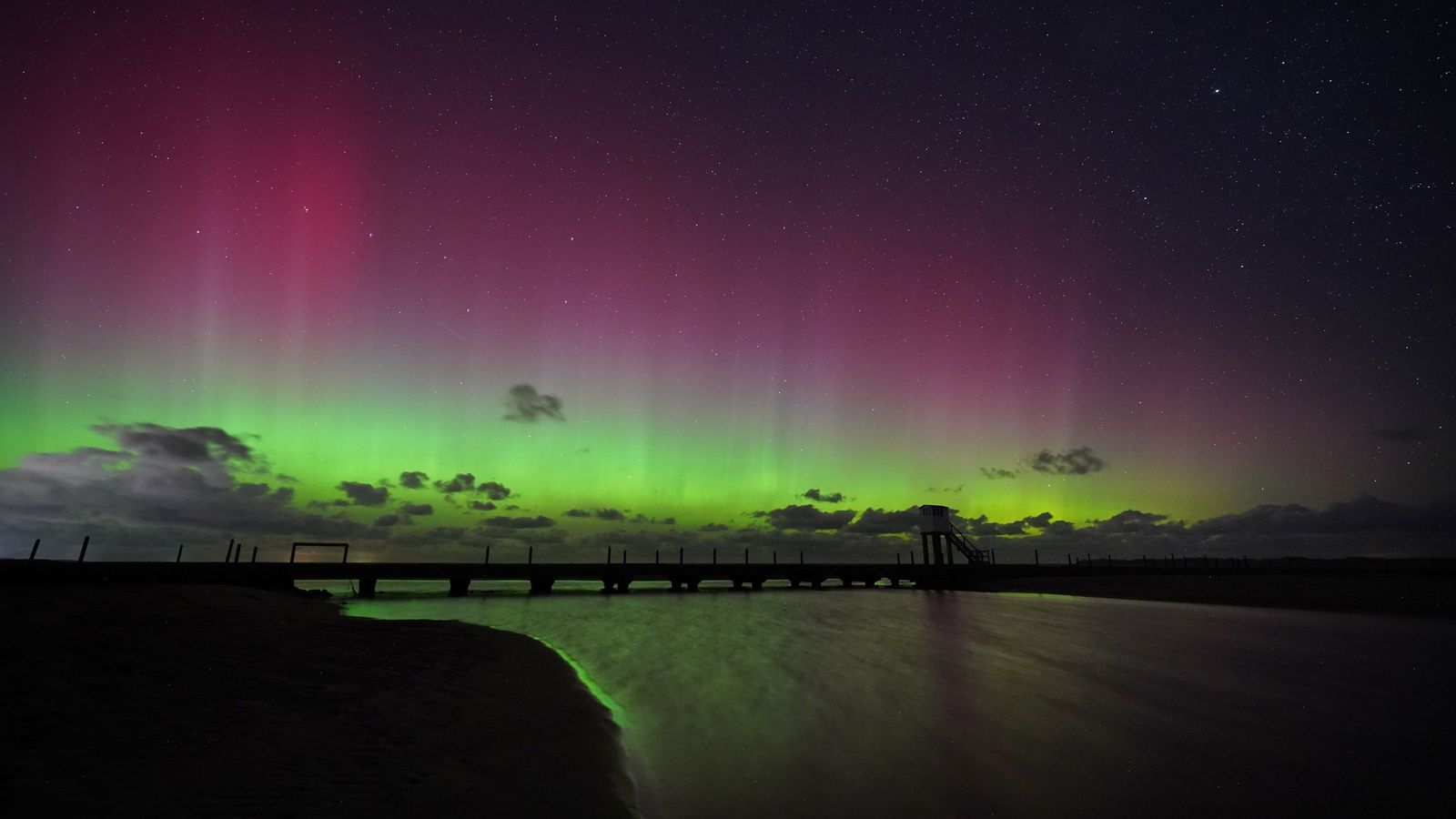Parts of the UK were treated to a spectacular display of the Northern Lights last night.
Also known as the Aurora Borealis, it’s one of the most dazzling displays in the night sky.
Lancaster University’s AuroraWatch, run by the Space and Planetary Physics group, issued a “red alert” – meaning seeing the phenomenon was very “likely”.
The spectacle is most usually associated with Scandinavian countries in Europe but is sometimes visible in the UK.
It is rarely seen south of Scotland – but last night, stargazers reported sightings in Northumberland, the Lake District, Greater Manchester and as far south as Cornwall.
Vivid green, purple, pink and yellow streaks were witnessed through the night sky, with people posting images on X, formerly known as Twitter, describing the show as a “fantastic display”.
What causes the phenomenon?
According to the Royal Observatory Greenwich, the colourful lights we see in the night sky are caused by activity on the sun’s surface.
Solar storms on a star’s surface give out huge clouds of particles charged with electricity, which can enter the Earth’s atmosphere very quickly.
“These particles then slam into atoms and molecules in the Earth’s atmosphere and essentially heat them up,” Royal Observatory astronomer Tom Kerss said.
“We call this physical process ‘excitation, but it’s very much like heating a gas and making it glow.”
And so, what we are seeing are atoms and molecules in our atmosphere colliding with particles from the sun.
Be the first to get Breaking News
Install the Sky News app for free
How do I see the Aurora Borealis from the UK?
The further north you are, the more likely you are to see the display – if you’re on X, check out @aurorawatchuk, where the space physicists at Lancaster University will tweet when the Northern Lights may be visible from the UK.
The conditions still need to be right: dark and clear nights with as little light pollution as possible.








